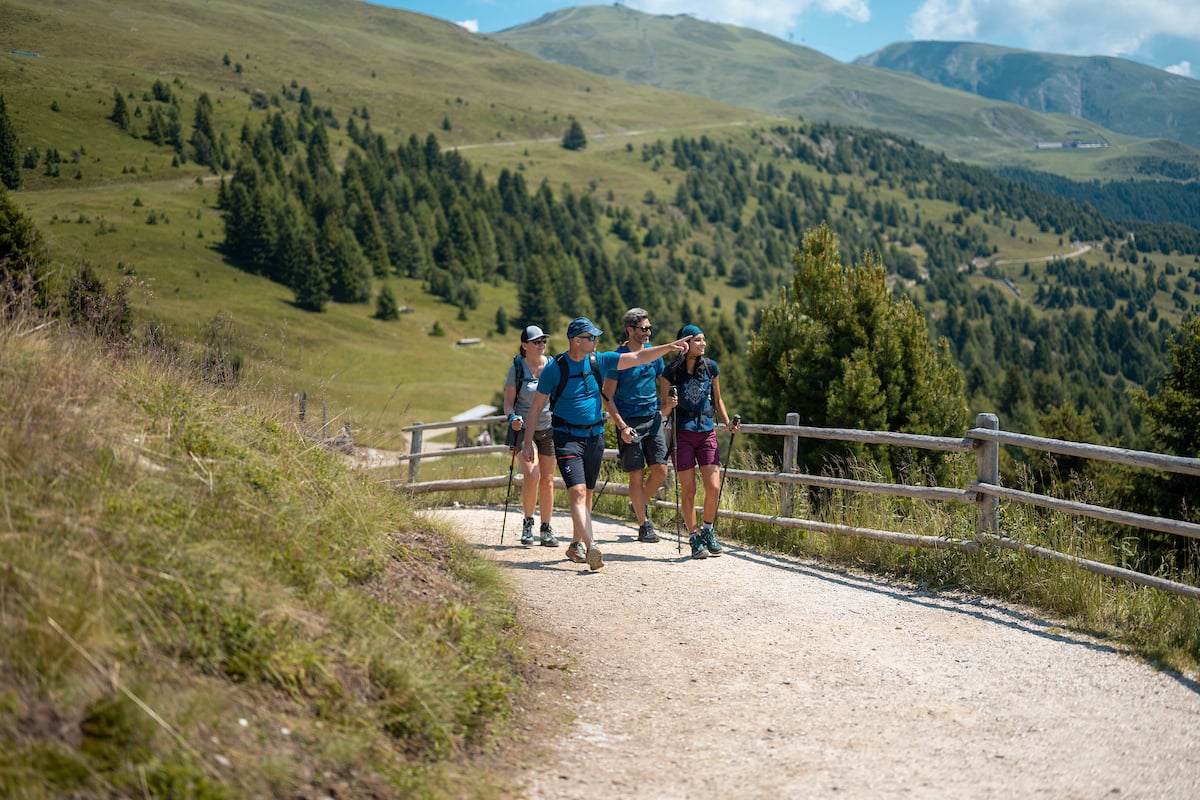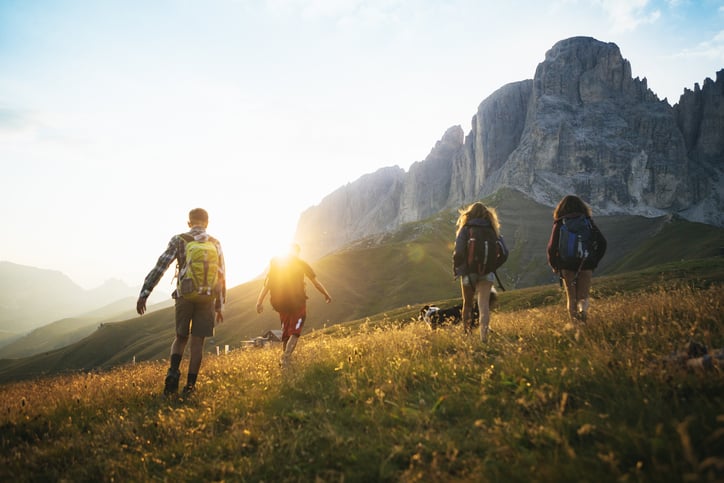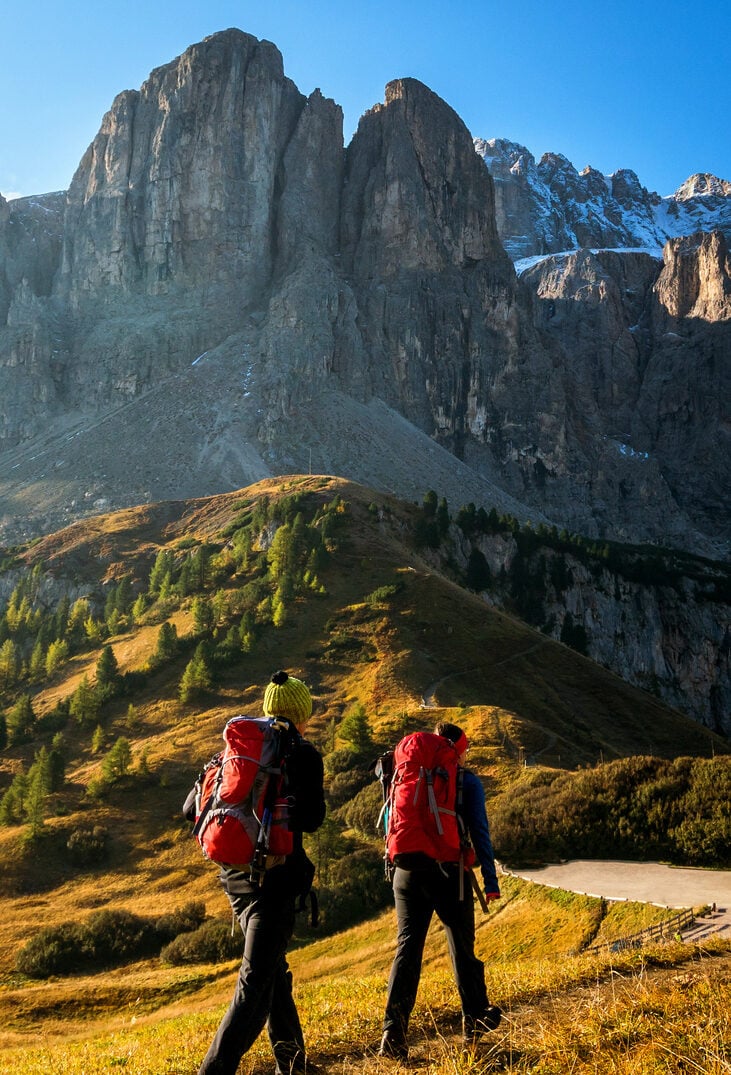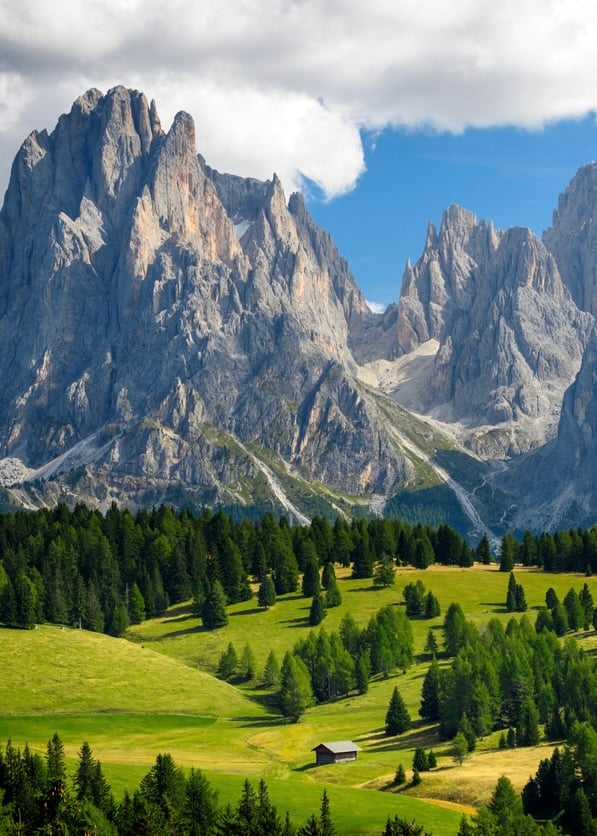
Hiking Alta Via 1: Guided Tour in the Dolomites
The Italian Dolomites are home to countless trails, but Alta Via I is the crown jewel. This legendary path—literally meaning high route—strings together dramatic scenery, rich Alpine culture, and views that stay with you long after the trek ends. Alta Via offers a slower, more immersive way to explore the Dolomites, without the usual crowds.
When summer arrives, the Dolomites trade snow for wildflower meadows, shimmering lakes, and peaks that carve a bold line across the sky. Over six days, we trek along the celebrated Alta Via I, allowing us to explore the very heart of the Dolomites, with enough time to ease into and out of the adventure.
In the heart of the Dolomites
Walking beneath pale sharp-toothed spires, through gentle green gorges, and past turquoise lakes is just an ordinary day in the Dolomites. The best part is that you don’t need to be an elite athlete—Alta Via I is perfect for any fit hiker looking to dip their toes into big mountain hiking.
And while the views might bring you here, the Italian rifugios are what make the Alta Via experience unforgettable. Far from rustic shelters, these are cozy huts serving steaming pasta, strudel, and local wine after a day on the trail.
Booking well in advance might secure you a small dorm or even a private room! The comforts here are exceptional, especially when you consider some of these rifugios are perched at 2,700 m (9,000 ft). You’ll wake up each morning to crisp mountain air, an espresso in hand, and a croissant on the terrace as the Dolomites unfold before you.
- ALPINE MEADOWS
- TOWERING PEAKS
- COZY RIFUGIOS
- UNESCO HERITAGE SITE
- HIGH-ALTITUDE TERRAIN
- DELICIOUS DISHES
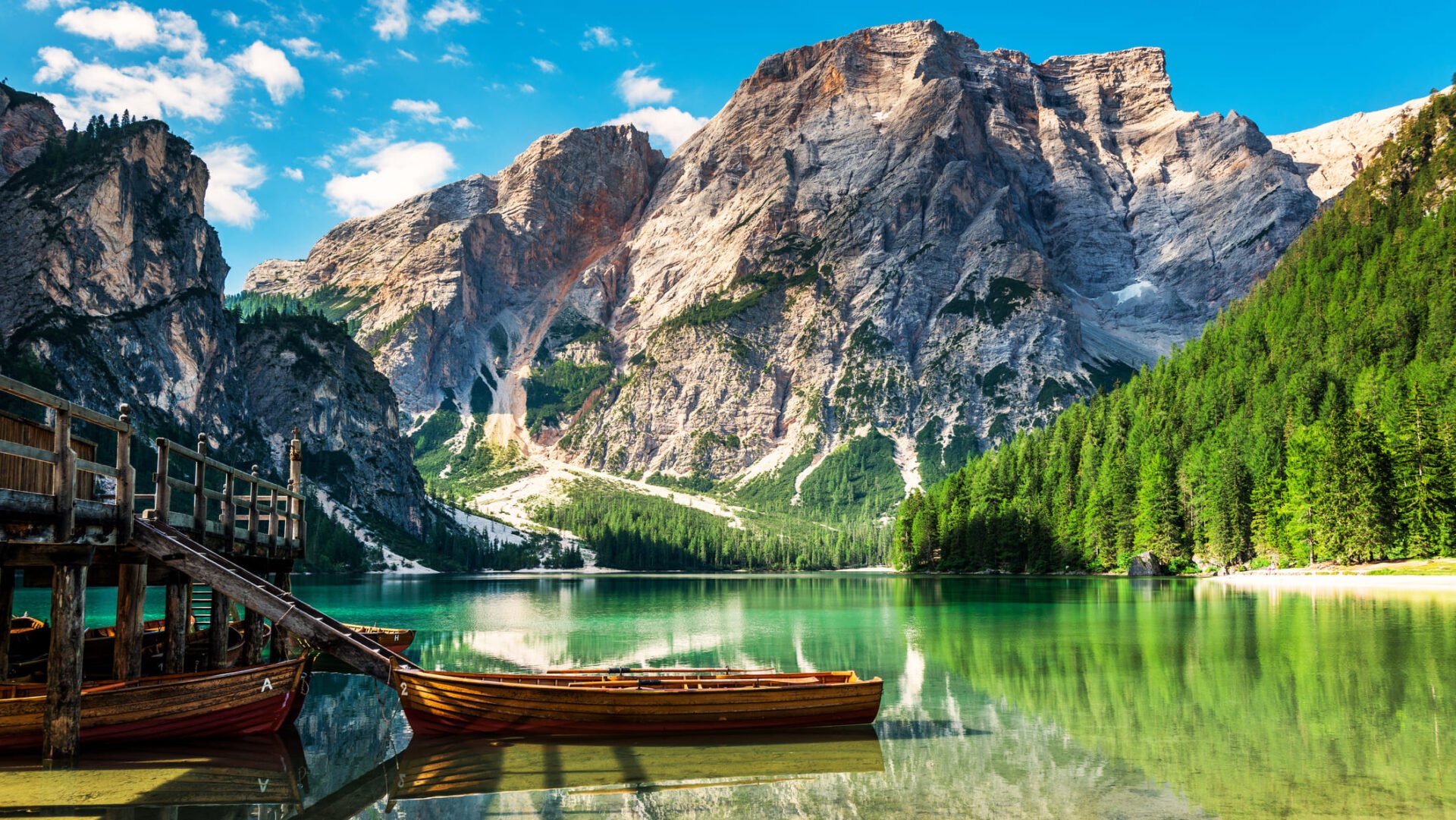
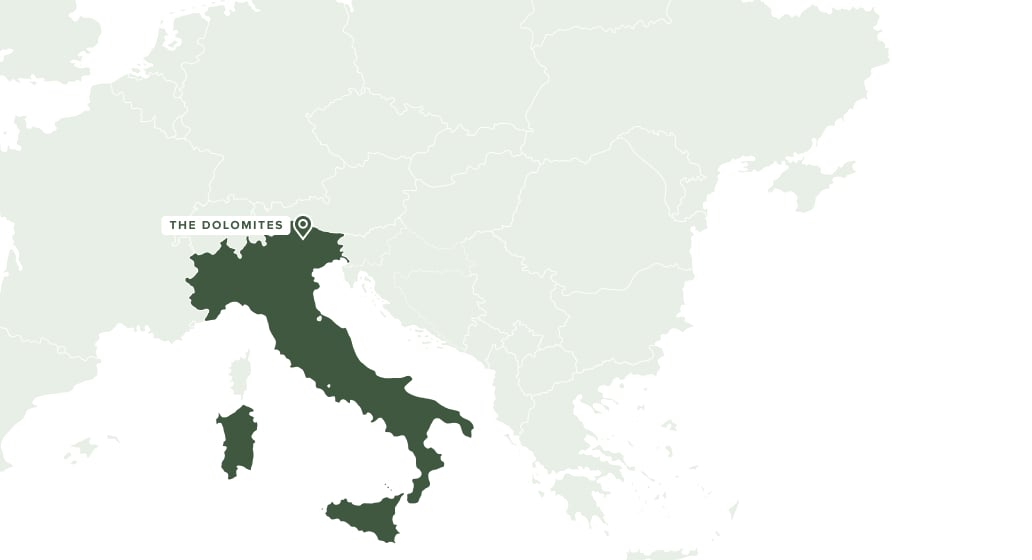
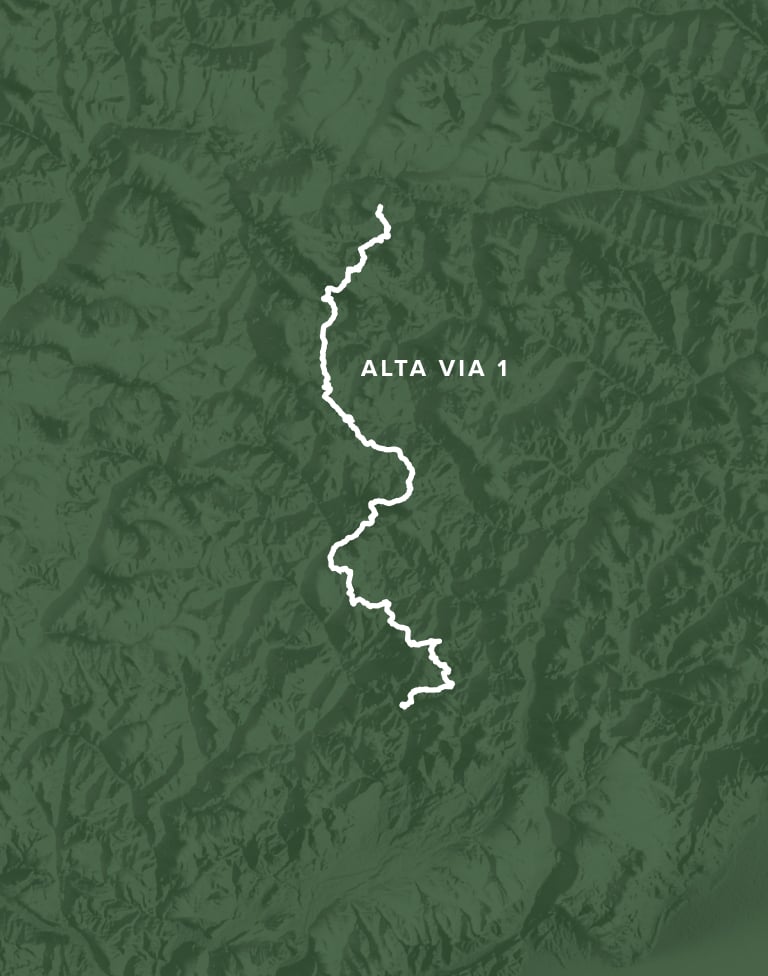
Experience the Dolomites’ remote corners on foot
AIRY SUMMITS WITH EXCEPTIONAL VIEWS
With a dizzying array of peaks—18 of them above 3,000 m (10,000 ft)—the Dolomites are one of the world’s most storied mountain ranges. The area is a designated UNESCO World Heritage Site due to its geomorphic significance and diversity of pinnacles, rock walls, steeples, karst systems and glacial landforms.
The most prominent peak is the Marmolada at 3,343 m (11,967 ft), affectionately called La Regina delle Dolomiti—the Queen of the Dolomites. Jagged spires and soaring peaks rise from verdant valleys, creating a landscape that feels almost unreal until you see it with your own eyes.
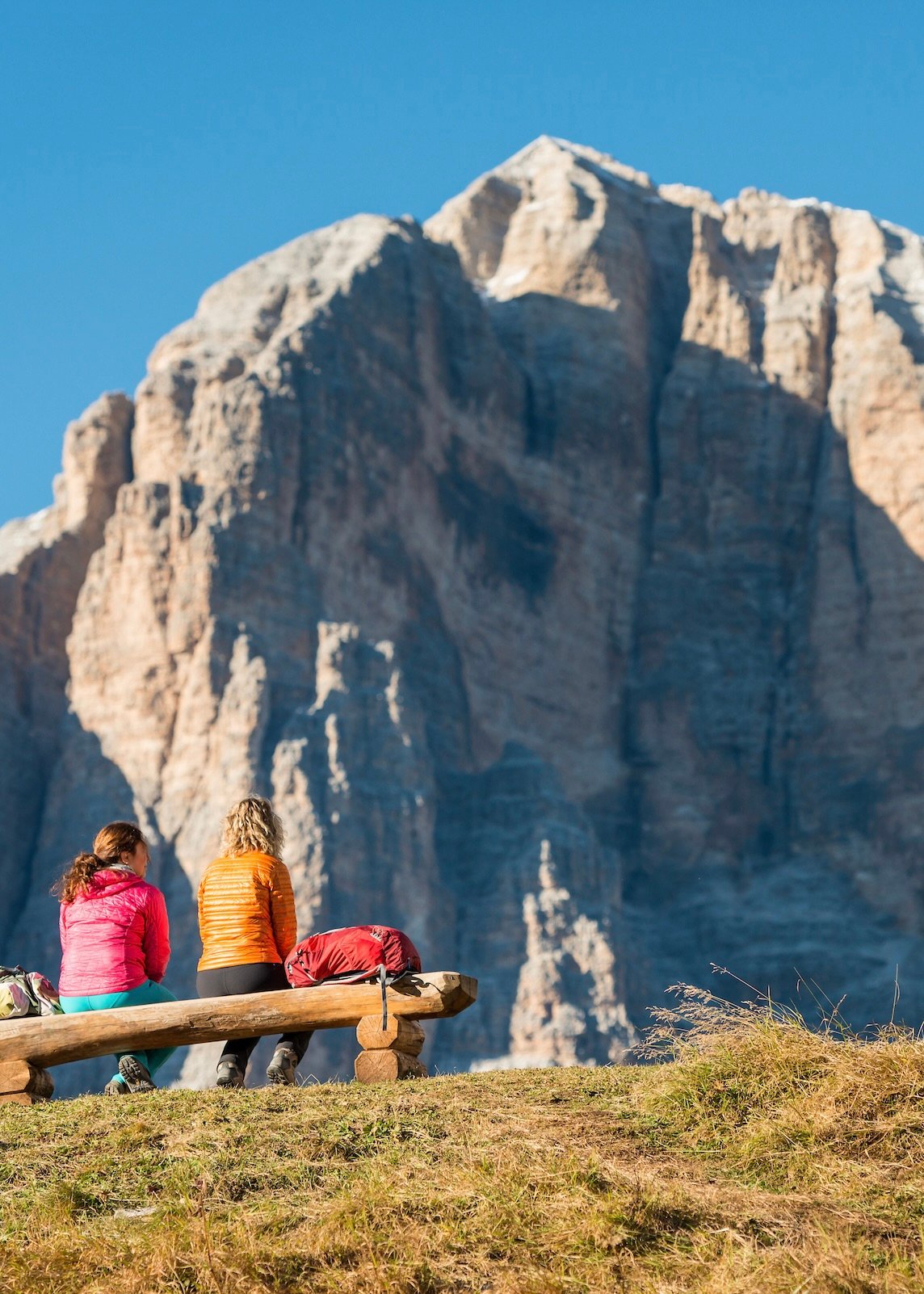
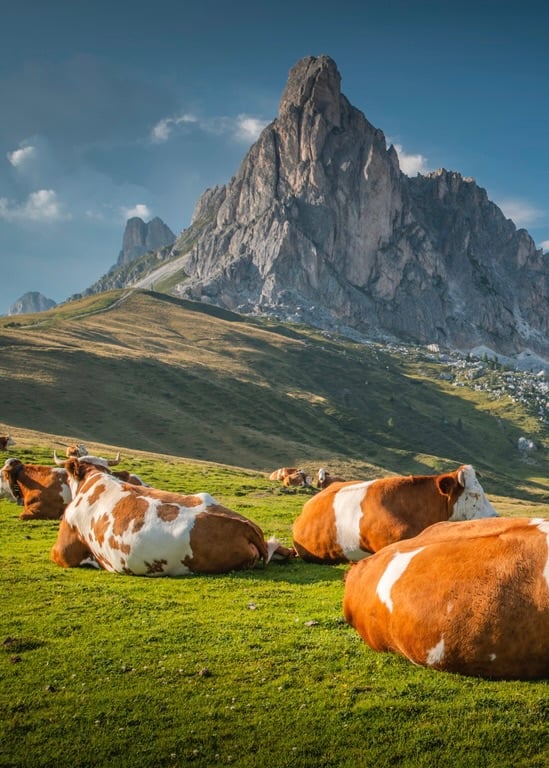
REGION STEEPED IN HISTORY
What most visitors don’t realize until they arrive is that the Dolomites are as rich in history as they are in scenery. These mountains were once a dramatic battleground between Italian and Austro-Hungarian forces during World War I, and traces of that past remain along the Alta Via 1.
Along the way, you may come across fortifications, via ferratas—originally built out of wartime necessity—and mountain huts that once linked front lines and strategic positions, where stunning landscapes meet tangible traces of history. If you’d like to try a via ferrata, let us know in advance and we can make it happen!
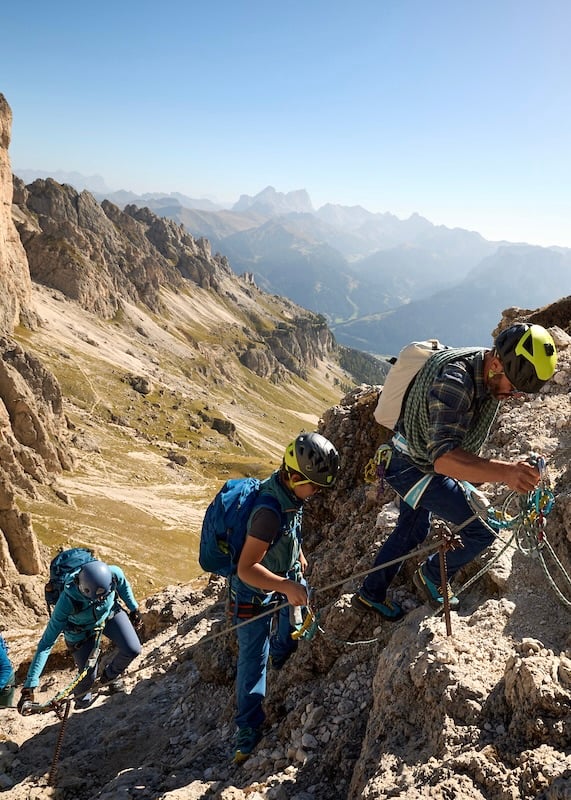
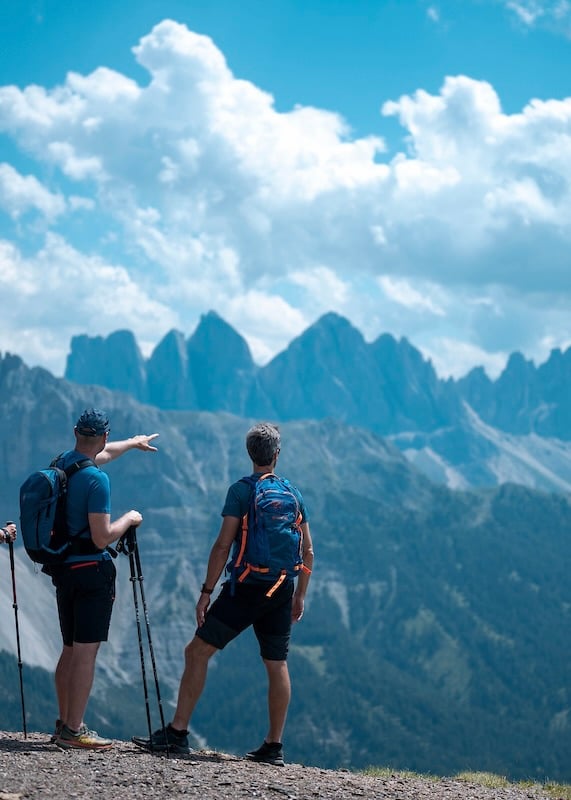
Step inside the enchanting world of the Italian Alps
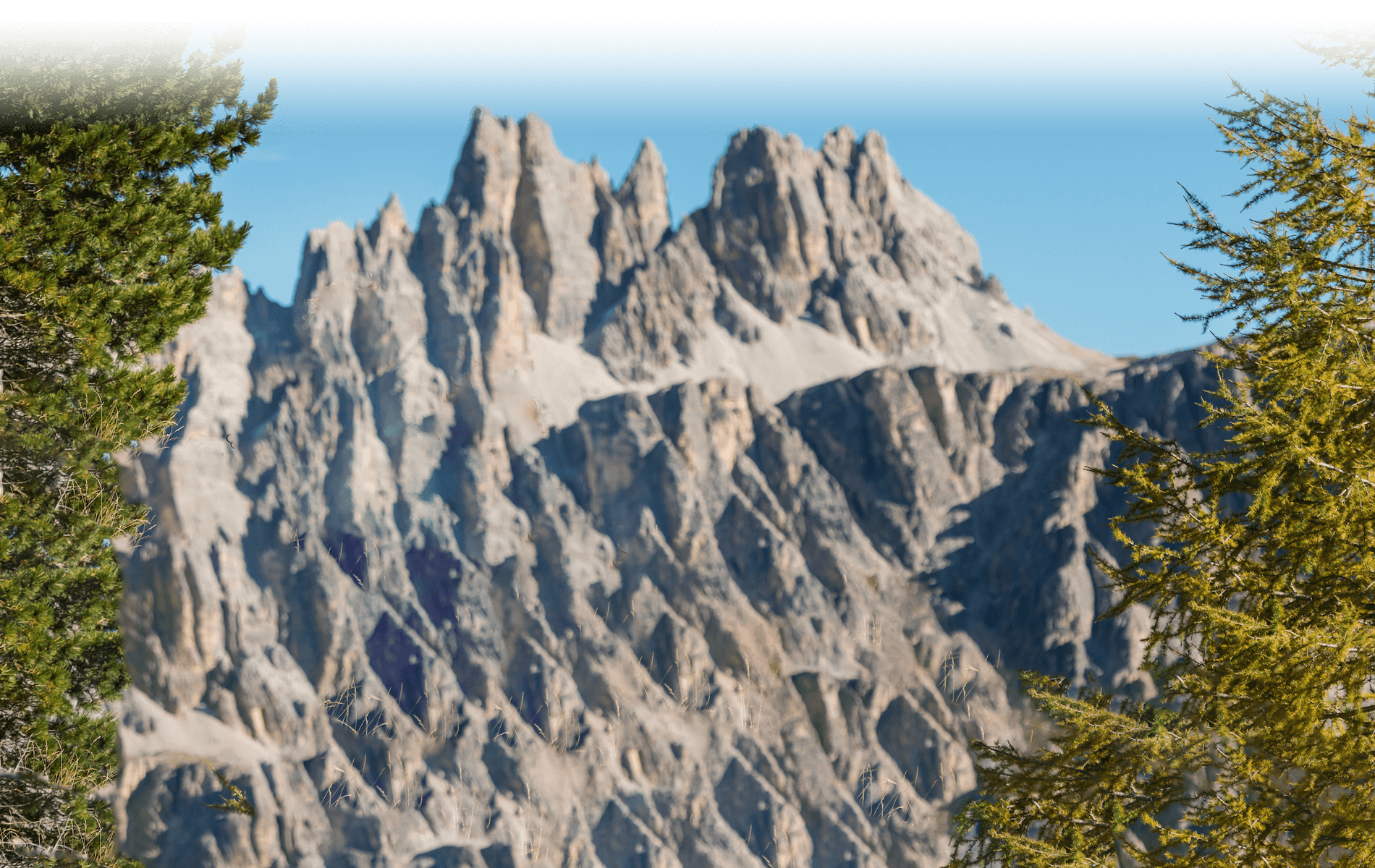
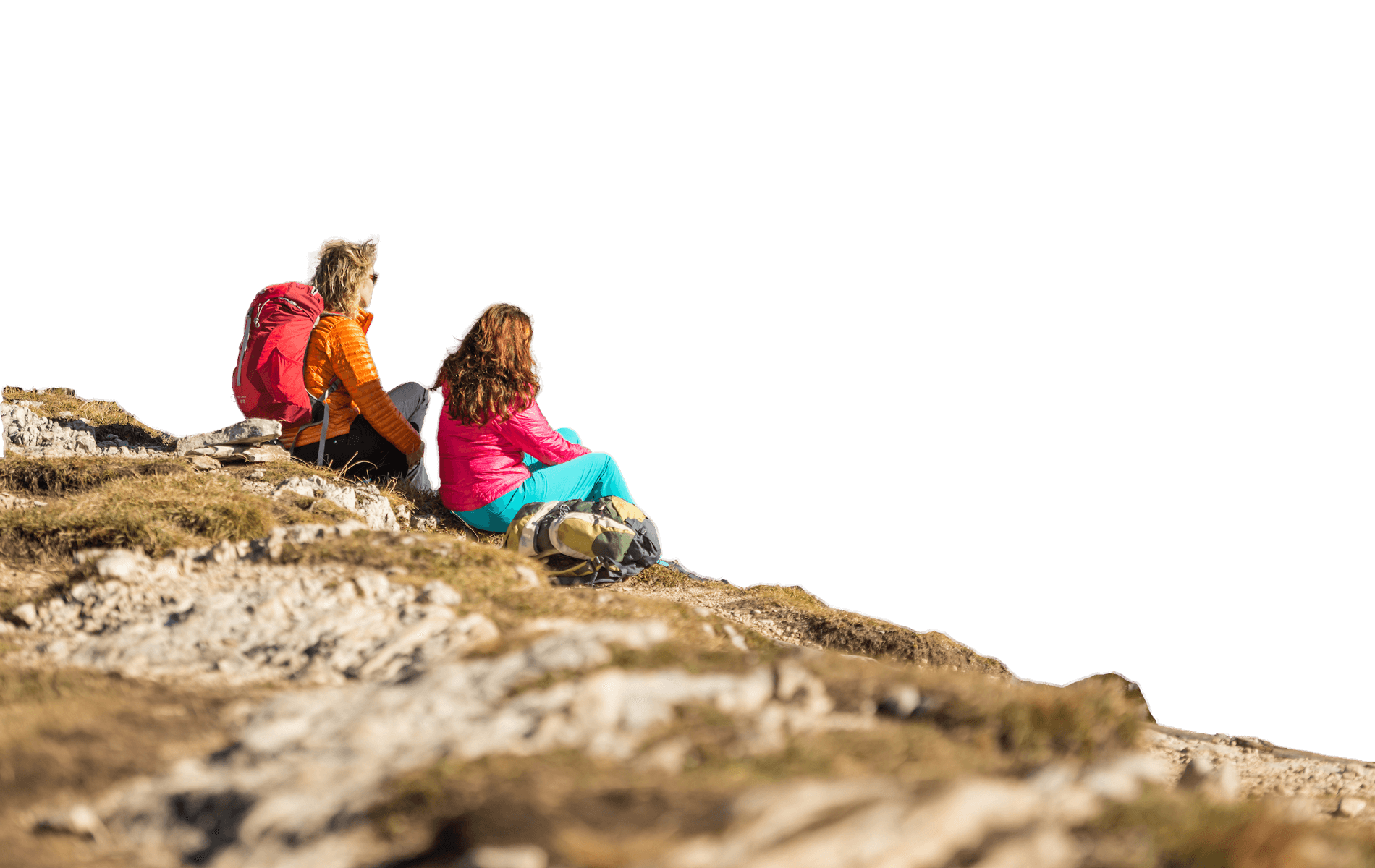
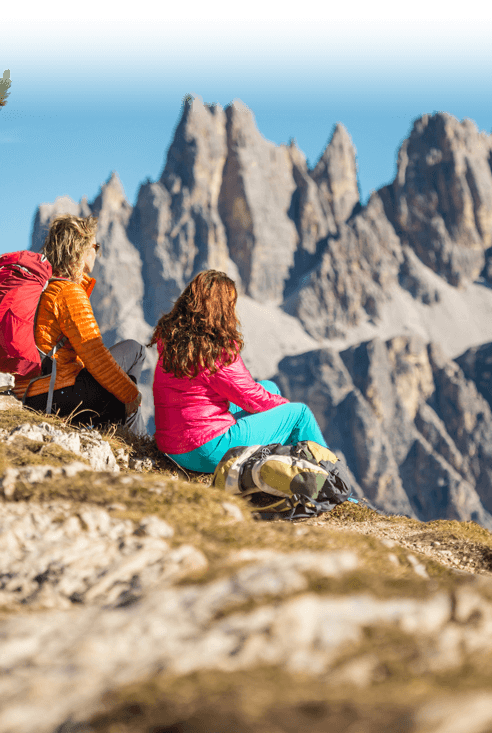
Living the mountains beyond the trail
AUTHENTIC & CHARMING RIFUGIOS
With wild camping prohibited, the Alta Via is dotted with an abundance of huts along the route. These welcoming rifugios offer a comfy shelter, stunning views, and hearty regional meals. No heavy packs needed—thanks to seamless logistics, most baggage stays in Cortina while we carry only the essentials from hut to hut.
While some rifugios are simple dormitory-style with bunk beds, many are surprisingly well-equipped, offering private rooms and en-suite bathrooms, even showers! Booking early is key here—the sooner you reserve with us, the better the chance of securing the best rooms.
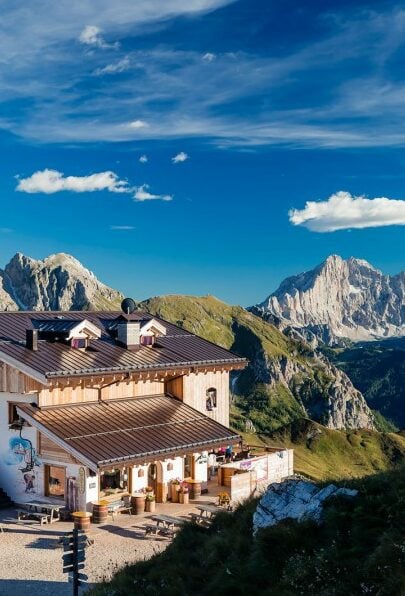

CULTURAL CROSSROADS
Today, this border region is home to three distinct cultures living side by side: Tyrolean German, Italian, and Ladin, a minority group whose language and traditions are native to these valleys. Walking from village to village, you’ll hear local legends and savor cuisine shaped by each culture.
From sauerkraut, strudel, and speck dumplings to fresh pasta and golden fried pastries, the region offers a rich taste of the Dolomites’ unique heritage. Each meal tells a story of local traditions, passed down through generations and shaped by the valleys’ three distinct cultures.
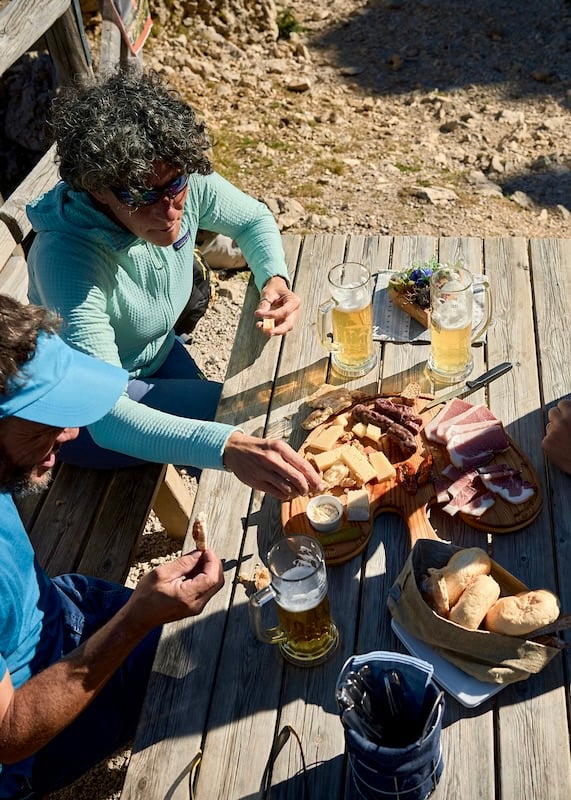
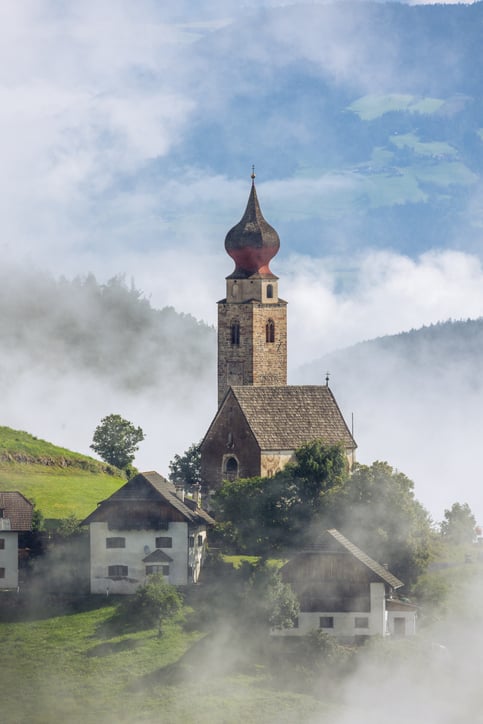
Professional local guides
With years of experience exploring the Dolomites, your guides know every trail, peak, and rifugio like the back of their hand. They design active, memorable adventures across Northern Italy that are thoughtfully crafted, stylish, and rich in local insight, offering both quality and a true connection to the mountains.
